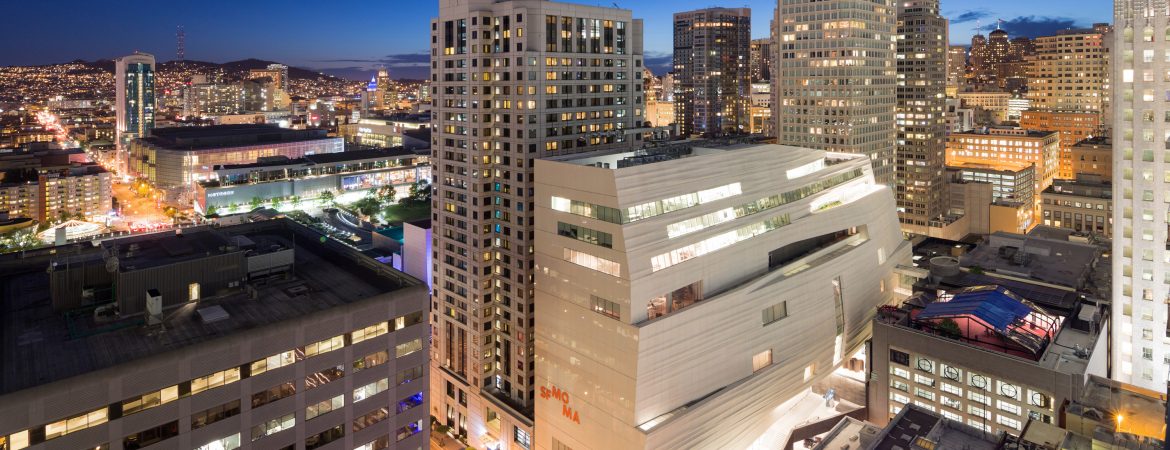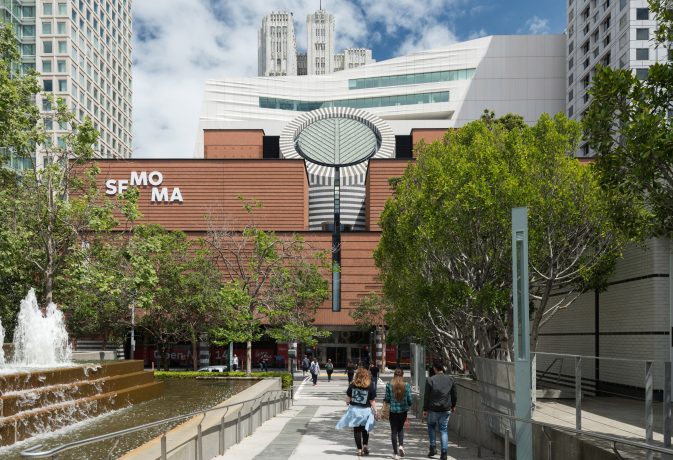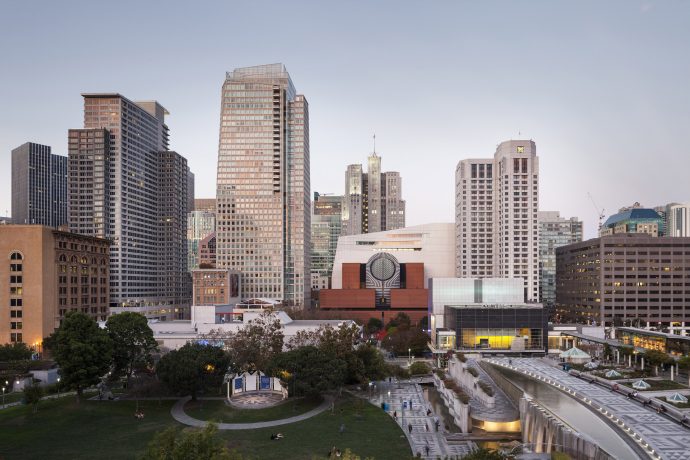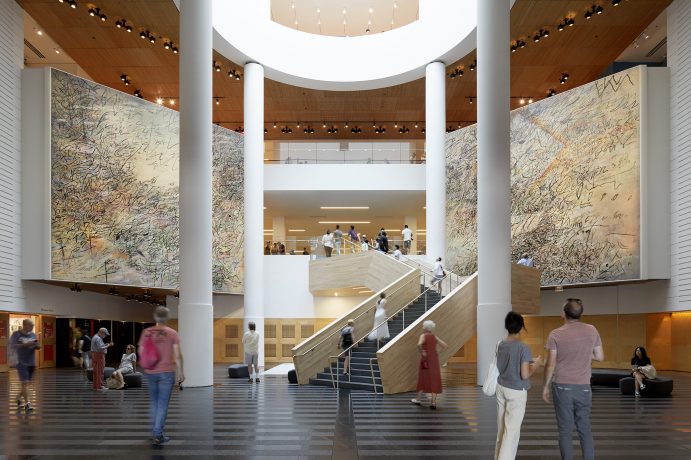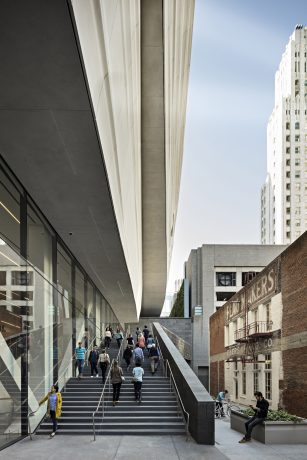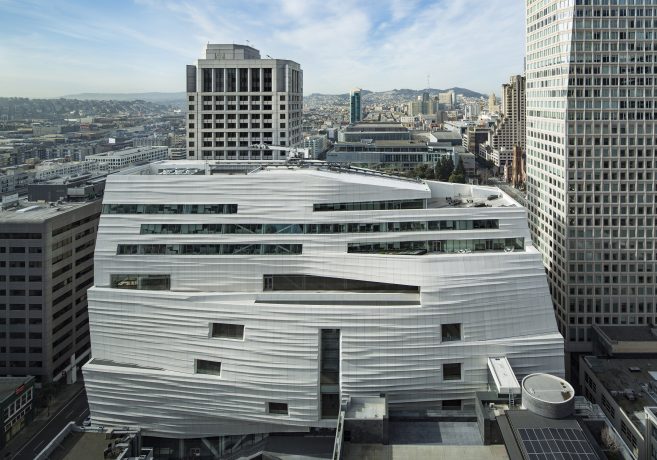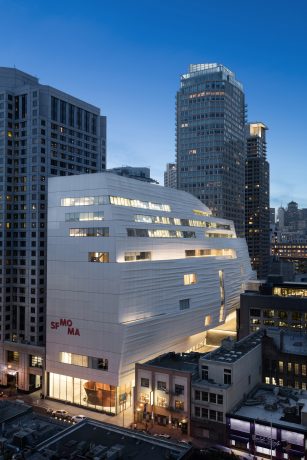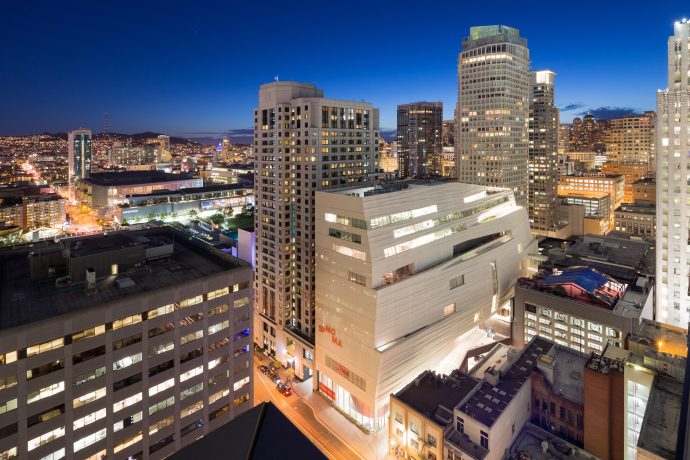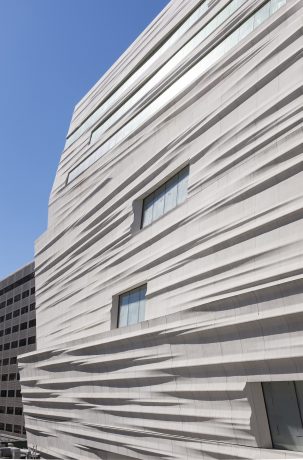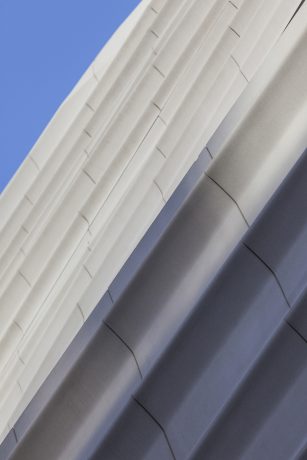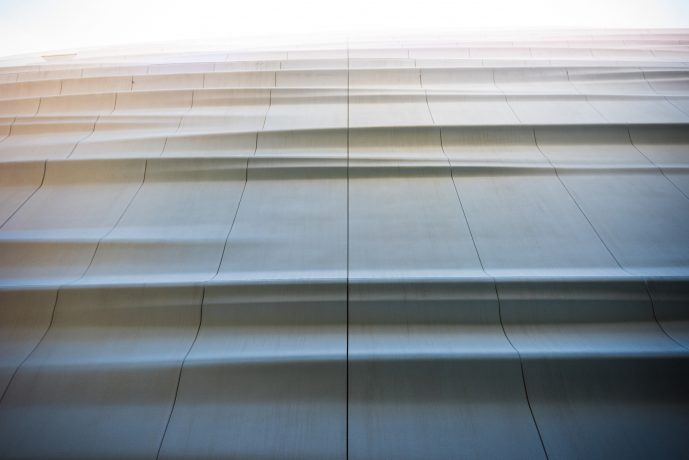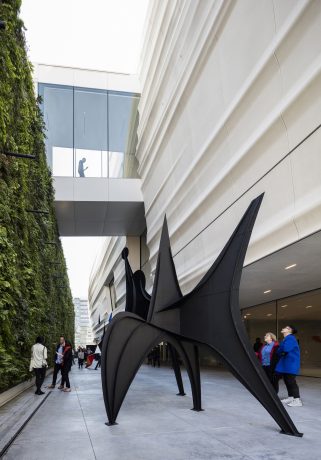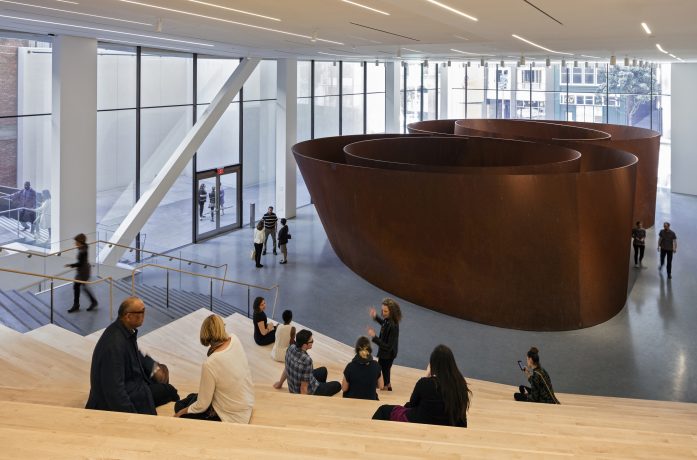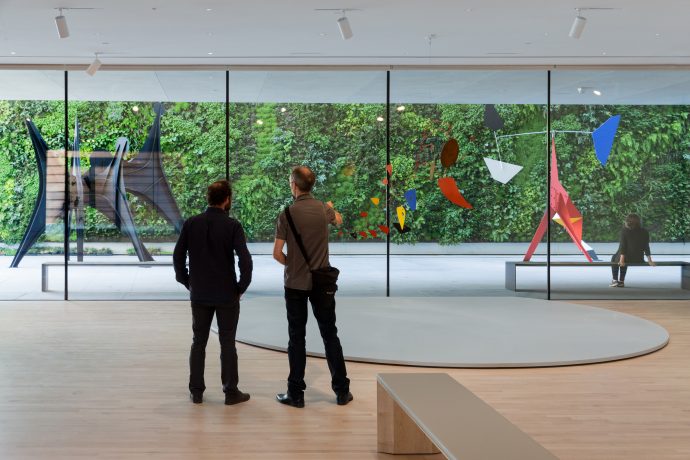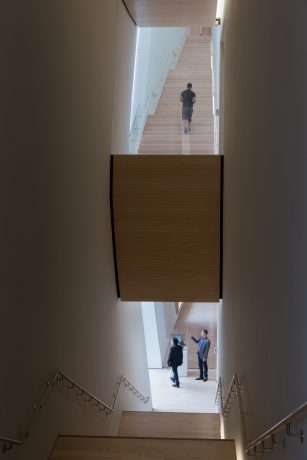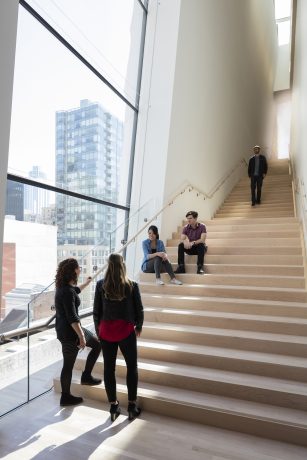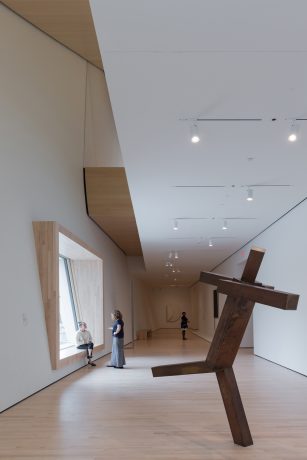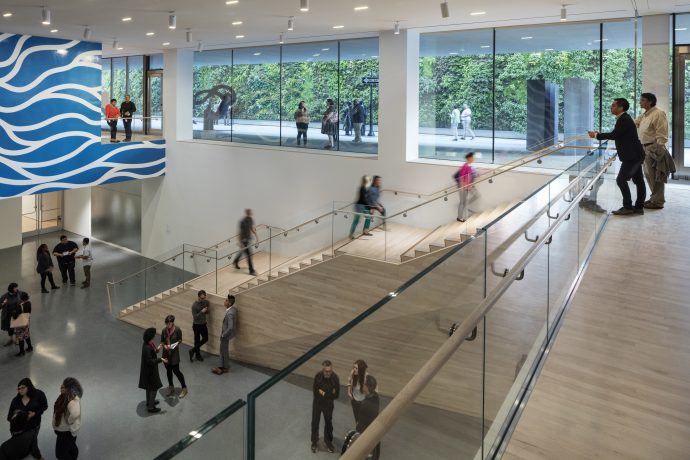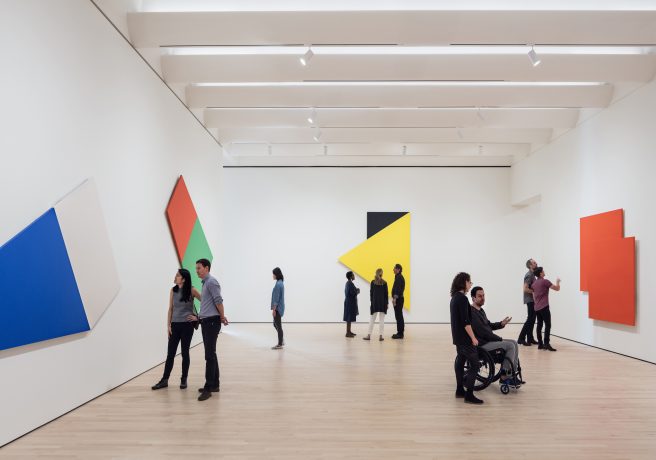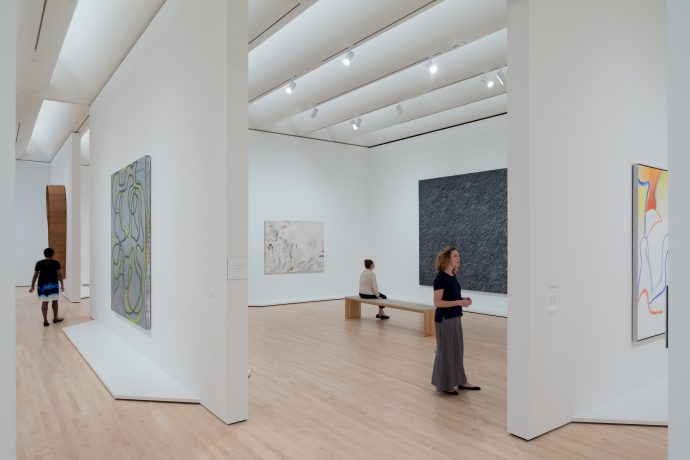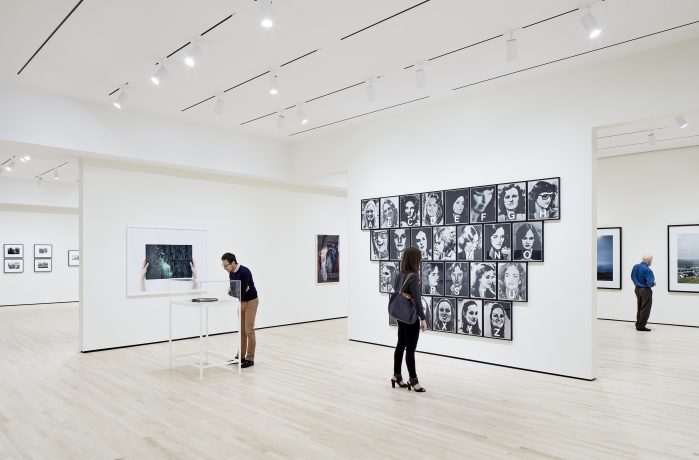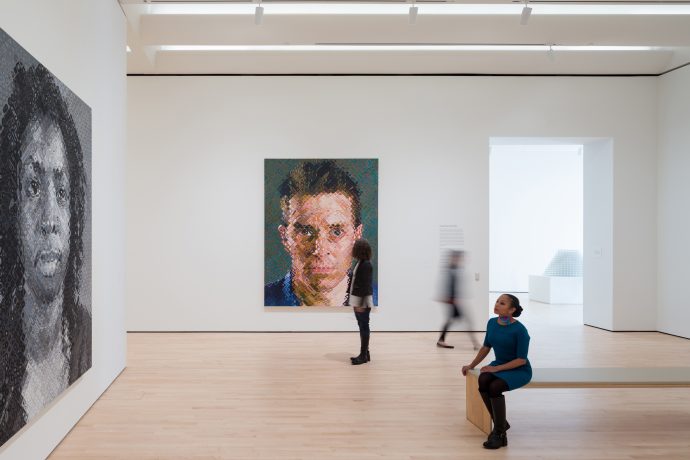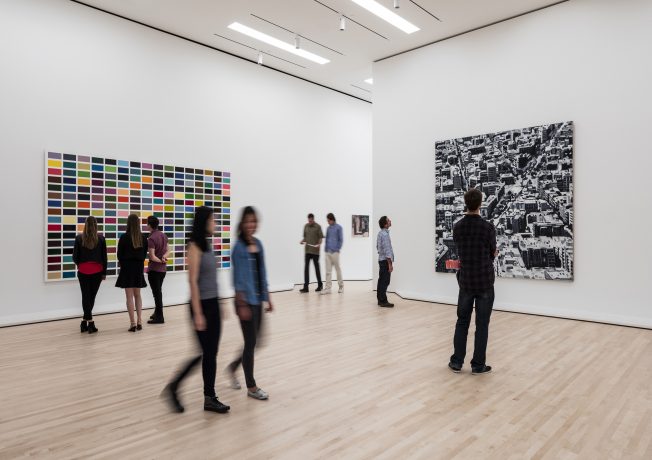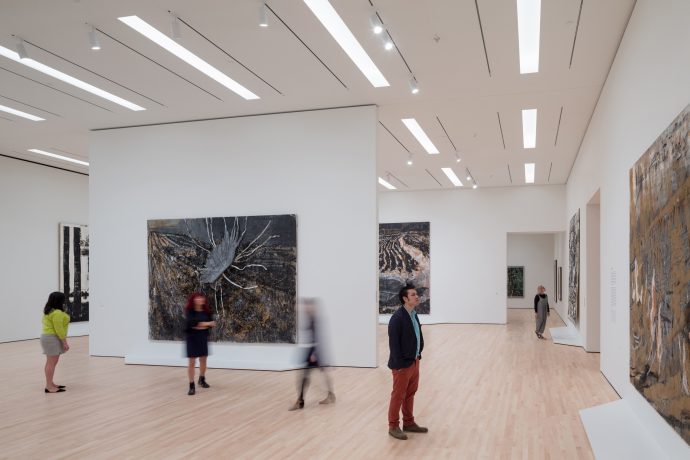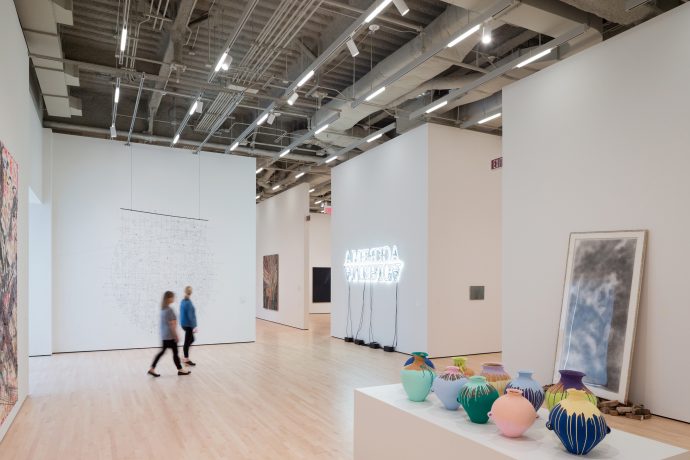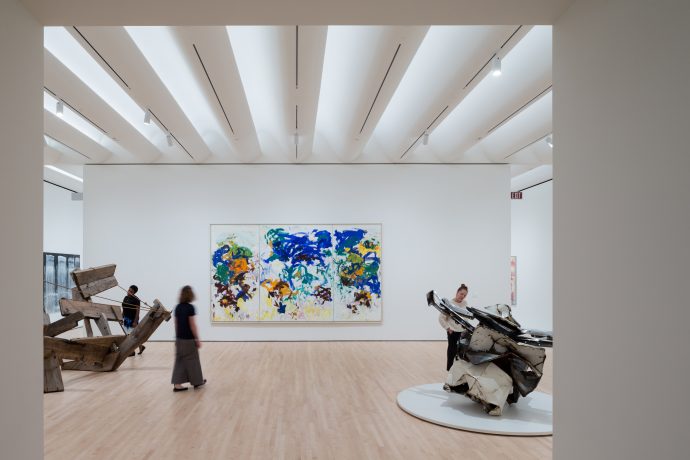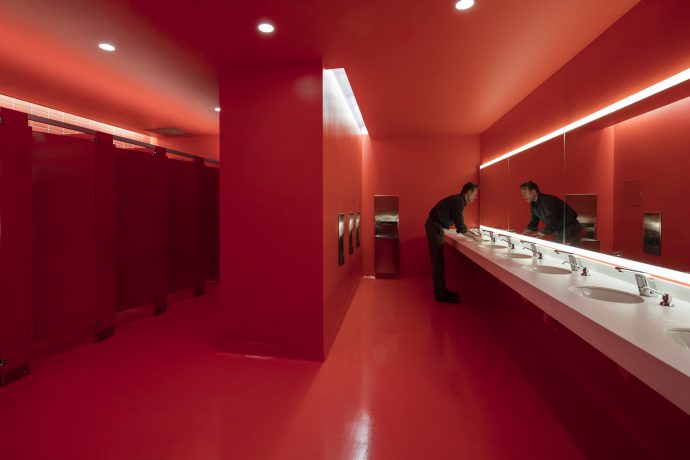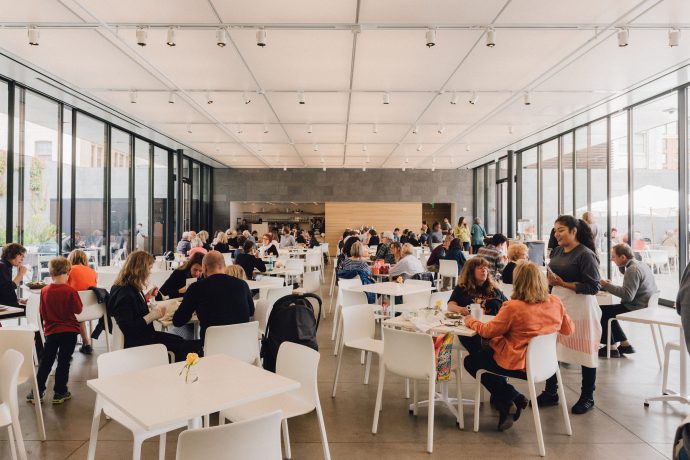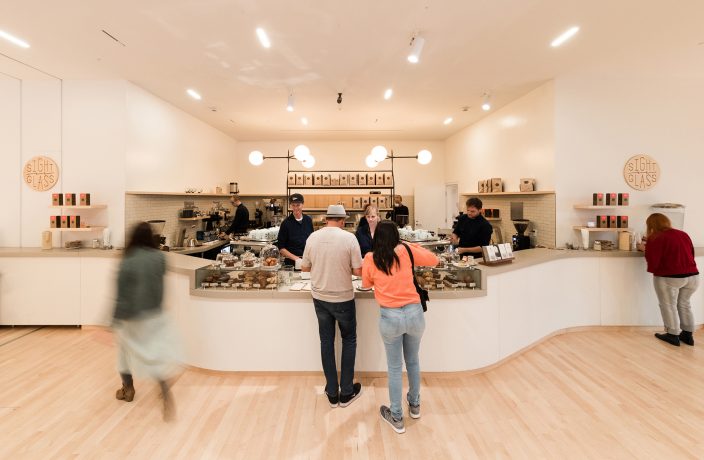San Francisco Museum of Modern Art is unlike any other building in Downtown San Francisco. That might not technically be accurate. It’s a building unlike any other in the world. Using words to describe it is generally a practice in futility, but we might as well try anyway.
It’s best to examine the building in two parts, as half of it was designed by Mario Botta and opened in 1995, while the other half was created by Norwegian firm Snøhetta and opened in 2016. These two very different styles are joined together to make a single building, albeit one that is incredibly different looking depending upon the angle at which it is approached. From Howard, it is a beacon of brightness on a rather drab city block. You don’t often see entirely white buildings, but SFMOMA evidently isn’t afraid of standing out. The surface of the Snøhetta building isn’t flat, either; there are organic-looking ripples in the surface looks like an iceberg, or, more appropriately, a bank of fog. This facade is the one designed by Snøhetta and is appropriately Scandinavian in appearance.
When you’re approaching the building from Yerba Buena Gardens, it looks like a periscope emerging from the ground, a never-blinking eye placed at the top of a series of brick boxes. This is Mario Botta’s geometric dream, fundamentally different from the undulating curves of its 2016 counter-part. They’re an interesting study in the combination of different architectural types, which is pretty appropriate given the fact that the contents of SFMOMA span at least a hundred different genres of modern art and represent artists from all over the globe.
Our ideal visit would start at the entrance just off Howard street, slipping through the glass doors into a minimalist sculpture by Richard Serra. That’s right, in. It’s a massive, labyrinthian steel installment that does a pretty decent job of filling the auditorium space. A short flight of stairs, running parallel to wooden bleachers that are often full of furiously sketching art students, leads up to the ticketing area and a handful of permanent galleries, along with a library.
Many museums have libraries, but none are quite like the one at SFMOMA. It’s actually an official branch of the San Francisco Public Library, but it resembles a trendy living room more than anything, with oversized midcentury chairs, triangular bookshelves, a pair of large standing turntables accompanied by a modest collection of vinyl, and a smart car sized card catalog. It’s a celebration of the public library’s role in modern life as an equalizing force where all people are given the same access to information without a care for the numbers in their bank account.
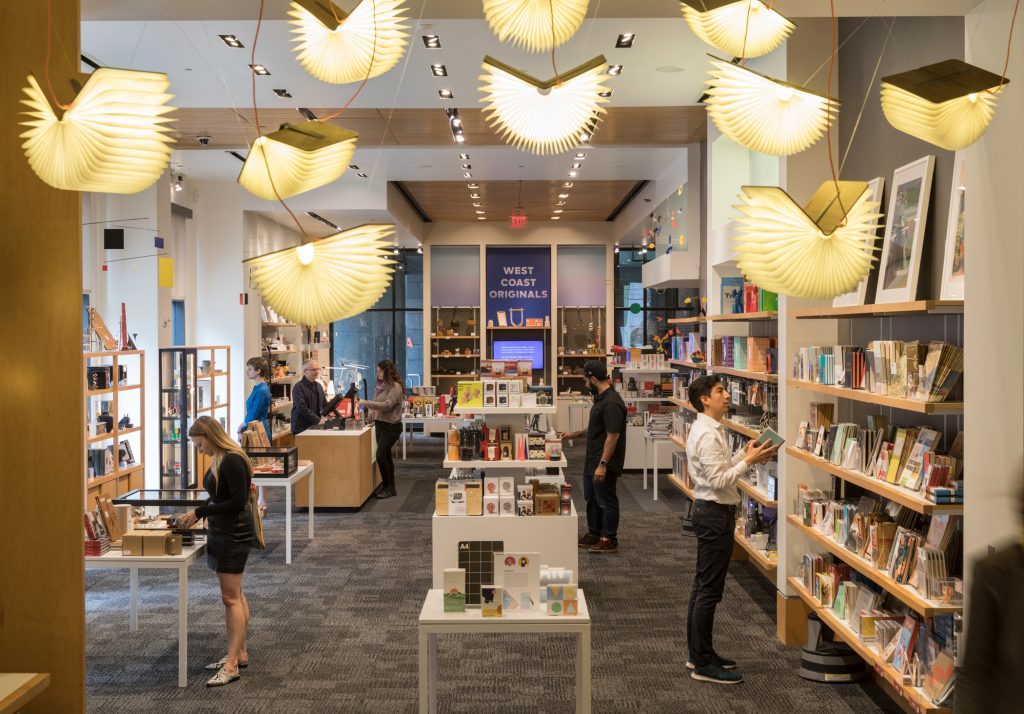
Up the stairs and on to the third floor and the scent of coffee beckons me to Sightglass, a small coffee shop and ideal study space amongst the galleries. After enjoying a shot (or two, depending on the day) of espresso, we always like to take a peek at the graphic design collections that are housed on this level. What’s on view changes constantly, but it’s always rather profound and an interesting reminder that design plays an integral role in daily life.
Impossible to escape in the SFMOMA hashtag is the Living Wall, which sounds like a metaphor but isn’t in the slightest. Wall is almost too mild a term-- there are more than four thousand square feet of plants stretching thirty feet into the air. The wall is positioned on a terrace and is visible from the galleries on the floors above, meaning that no matter where you go, there’s always a little slice of nature nearby.Speaking of nature, who doesn’t love a few giant spiders? Louise Bourgeois’s arachnids are cast in bronze and tower over visitors.
This floor is also the entrance to the Oculus, that periscope-like appendage visible from the front of the building. It’s a sight to behold from the inside, with a pair of curling staircases leading up to a bridge that spans the skylight. It’s as iconic a view of San Francisco as any. The fifth floor is also where you’ll find some of the museum’s most famous holdings. There’s plenty of Warhol, of course, but also some of our favorite portraits by Chuck Close, among plenty of other hidden gems.
Even after the multiple-mile trek that fully exploring SFMOMA entails, We’re always excited by the sight of the words “Rooftop Sculpture Garden” on the glass doors that lead to one of SFMOMA’s roofs. It’s the place to be in San Francisco on a sunny day, with block planters, plenty of benches, and a Robert Indiana “Love” statue, among others. On the other side of the garden is the entrance to Cafe 5, one of the restaurants housed inside the museum. Cafe 5 is endlessly Instagrammable, with two walls of windows allowing in the maximum amount of natural lighting and all-white surfaces-- not to mention the gorgeously plated foods.
This ideal visit does not end where it began. Instead of returning to Howard Street, we like to turn to the other entrance, the one facing 3rd street. The ground floor atrium is approached from a different set of stairs, near the information desk, that open on to an exceptionally large space. It’s always quite bright, as the massive periscope-like skylight opens up above this space. For some reason, you get the feeling that you’re arriving at some royal ball or making an epic entrance on to some dramatic scene. Anyway, this side of the building has the entrance to one of our favorite museum gift shops. That’s right, the gift shop can easily be treated as a gallery of its own. We especially love the flares of San Francisco style: books on cable cars, handmade jewelry from local artists, or an unfailingly trendy tote bag with the museum’s blood orange initials on it.
As we emerge on to the busy San Francisco street after a long day at the museum (and, as you can probably imagine, there’s plenty to keep you occupied for an entire day. Or week.) we’re struck by how the liveliness of the city is reflected in SFMOMA. They’re both beautiful, unexpectedly so. It’s discover something new every time you visit, even if it’s an installation that has been there for years.
